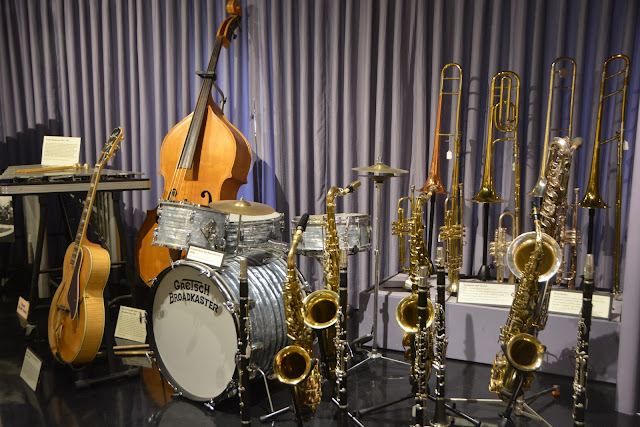Orchestras didn't always look the way they do today. They grew over many years from a few players many centuries ago to more than 100 musicians during the 1900s. Look at the timeline to see how it happened.
1500s
Groups of instrumentalists were called consorts - later this was called chamber music. Composers didn't write music for specific instruments - parts were played by whatever instruments were available.
1597 and 1607
Gabrieli and Monteverdi wrote the first modern orchestra music. All parts were composed for specific instruments.
1600s
Violins, violas, and cellos were the most important part of Baroque orchestras. There were also usually woodwinds and a harpsichord. The conductor was often the harpsichord player or first violinist who led the orchestra while playing. Sometimes conductors stood in front and pounded out the beat with a tall pole. Orchestras only had about 20 musicians.
1700s
Keyboard instruments began to disappear from the orchestra. the strings were now divided into four sections: 1st violin, 2nd violins, viola, and cello (basses played cello parts an octave lower). Other instruments included flutes, oboes, clarinets, bassoons, trumpets and kettle drums. Horns were added around 1750. ORchestras now had between 30-40 musicians.
1800s
During the early 1800s composers added more instruments to the orchestra, including piccolo, English horn and trombones. Improvements to brass and woodwind instruments made them sound better and stronger. The number of players increased to 80-90, depending on the piece.
1900s
Orchestras grew even larger, with some pieces calling for more than 100 players, although most instruments were the same as those in late 1800s. The percussion section was expanded and included various drums, cymbals, triangle, and keyboard percussion.
Pieces for Orchestra
Here are types of compositions you might hear at an orchestra concert.
- Symphony - a long, complicated work that usually have 4 movements but can have 3 or 5 movements. Great symphony composers:
Hayden
Beethoven
Brahms Mahler
Mozart
schubert
Bruckner
Tchaikovsky
- Overture - this started as the opening music before an opera or ballet. then they were played as separate pieces at concerts - without the rest of the opera. Later composers wrote pieces called overtures that were not part of an opera or ballet.
Overture from operas:
Marriage of Figaro (Mozart)
Magic Flute (Mozart)
William Tell (Rossini)
Mendelssohn, Weber, Berlioz and Tchaikovsky wrote concert overtures.
- Symphonic Poem - an emotional piece with only 1 movement inspired by a story, poem or artwork. Symphonic poems paint pictures with music.
- Concerto - a flashy work for a soloist and orchestra that shows off the soloist's playing - often with lots of fast notes.
Other posts of interest:
The History of German Music
A Brief History of Jazz
Be sure and visit the new software, Song Tutor.
All the best,
"Jazz washes away the dust of every day life." -- Art Blakey



